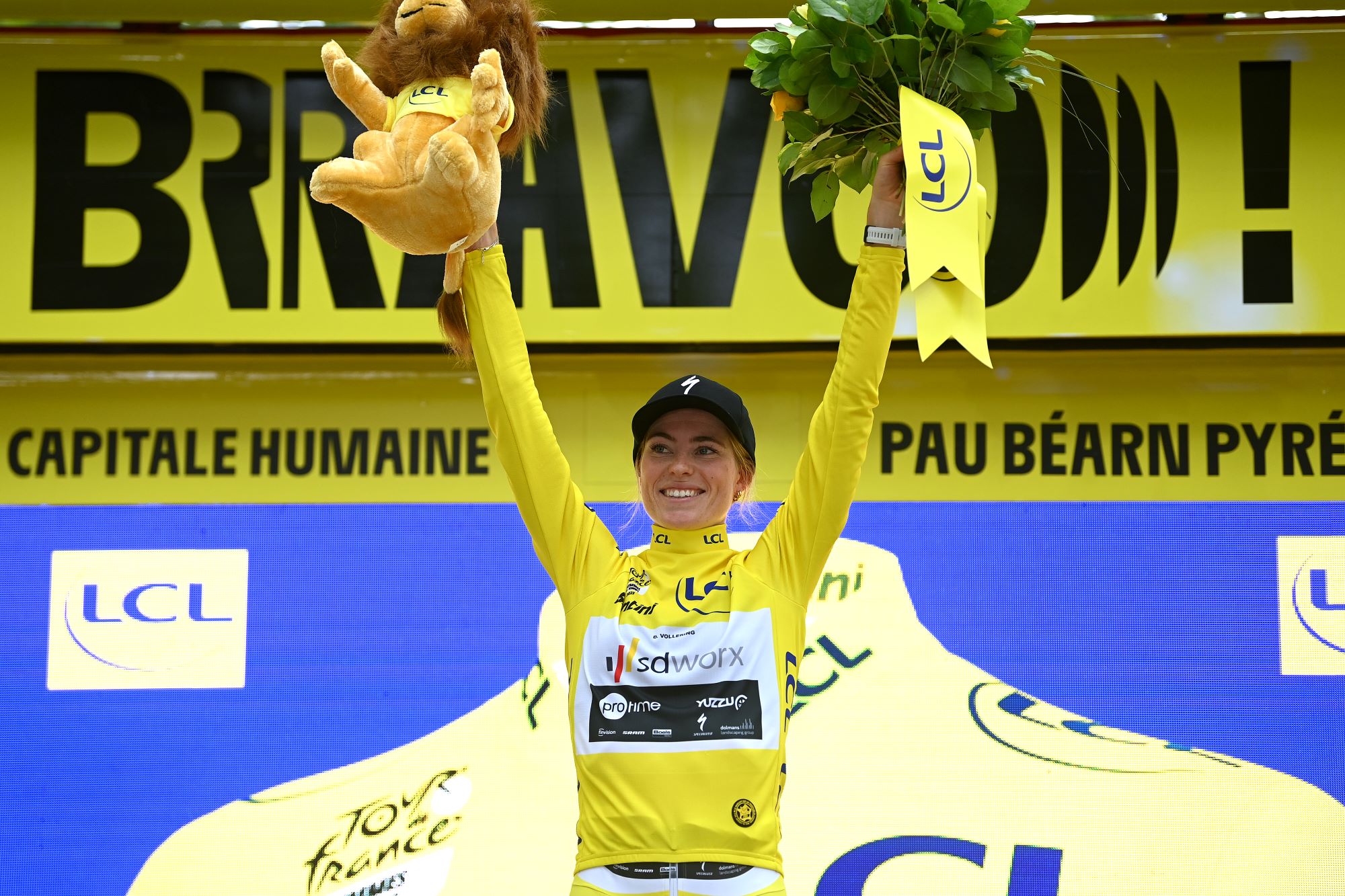A lack of strength and depth isn't what's holding women's cycling back – but neither is unequal prize money, economist shows
In most sports, more funding leads to greater competition and more revenue, but cycling is more complicated than that – here’s why


‘Women’s cycling is boring because the same riders always win’ – we’ve heard the argument a million times before, and this apparent lack of ‘strength and depth’ is often used as a justification for the financial imbalance between the two sports. The prize purse for the Tour de France Femme, for example, was just one-tenth of the size of the men's.
However, Emeritus Professor Robert Rider from California State University, San Marcos, has crunched the numbers and asserts that men’s cycling is no more competitive than women’s.
In fact, both sports are similar in how unbalanced the playing field is, despite drastically different levels of funding.
Therefore, Rider says, increasing the financial incentive within women’s cycling – a measure often cited as essential to its progress – won’t necessarily change the outcomes of the racing.
"We should not conclude that women’s cycling is not deserving of better funding. Women’s professional cycling is exciting. These are amazing athletes. But we should not expect more funding will make their race more competitively balanced," says Rider.
What do the numbers tell us?
According to Rider, both the men’s and women’s pro pelotons suffer from a lack of "competitive balance".
The term “competitive balance” is what economists use to describe the amount of parity between all the teams, or the degree to which the number of available wins are divided among all the teams that play.
Wanting to understand the imbalance between women’s and men’s professional cycling, Rider began with the hypothesis that the disparity may be due to a lack of competitive balance within the women’s field, eg, the victories always going to a small pool of riders and teams.
Rider used the Herfindal-Hirschman Index (HHI), an equation typically adopted by sports economists to measure the concentration of championships in various sports (i.e. the competitive balance). And in professional cycling, it measures the team shares of race and jersey wins.
The latest race content, interviews, features, reviews and expert buying guides, direct to your inbox!
“The lower the number the more competitively balanced the sport or industry is,” says Rider. "As it turns out, both men’s and women’s cycling are competitively imbalanced."
| Race | Actual HHI | Ideal HHI |
| Tour de France Femmes 2023 | .3491 | .0769 |
| Tour de France - last 32 years | .1653 | .0702 |
For example, in this year's Tour de France Femmes avec Zwift, there were 13 possible victories on offer – 8 stages, 4 jerseys and the team competition. These victories were fought over by 22 teams.
An ideal HHI measure, or perfect balance, would see a different team net each victory. This number, calculated out, would be 0.0769. But as it turned out, SD Worx dominated the racing. Of the 8 stages, SD Worx won 50%. They also won the General Classification, Points Classification and team competition. The HHI of the Tour de France Femmes avec Zwift in 2023 was therefore 0.3491, which is far from balanced.
This was no exception, either. Looking at data from all three of the women’s grand tours, Rider found that the Tour de France Femmes and the Giro Donne have HHIs more than three times their ideal HHI, the Vuelta Femenina slightly less than 2.3 time its ideal.
So how does that compare to men's racing? Rider calculated the HHI for the past 32 years of the men's Tour de France and found that while the ideal HHI is 0.0702, the actual HHI was 0.1653 – 2.35 times the ideal.
Granted, this data only takes into account the Grand Tours - but it's those races that attract the interest of new, casual, returning and ardent fans the world over.
“There is no significant difference in competitive imbalance between women’s and men’s grand tours,“ Rider concludes.
"We should not expect more funding will make women's racing more competitively balanced."
Economist Robert Rider
For as much more money the men’s Tour receives in comparison to the women’s, the competitive balance is not better. According to this analysis, since the two fields are similar in terms of competitive balance, the lower profile of women’s cycling has nothing to do with the competitiveness of the field.
“Generally, we should expect that higher salaries and/or prize money will attract more talent to a sport,” says Rider. “But if the increased talent is signed by only a few teams, then it possibly could produce more competitive imbalance. This is where other measures may be necessary to ensure a wider distribution of talent.”
Many sports leagues take specific measures against imbalance in order to improve their league over all.
“Fans' interest is greater when there is greater parity in the sport, compared to when there is a lopsided contest,” says Rider. This hypothesis is called the uncertainty of outcome hypothesis and is the basis for the competitive balance regulations and rules recommended by economists for a lot of sports –generally team sports– like broadcast revenue sharing and payroll caps.
“All these [regulations] are coming from economists with the objective to make the sport more balanced, which in turn makes it more profitable,” Rider says.
So if more funding/equal prize money won’t help, what do we do?

What I, the author, take away from these numbers is that perhaps the issue with this entire assertion is that the treatment and support of the men’s field is the goal. If both fields have relatively terrible competitive balance compared to more popular sports, then that's something the entire sport - regardless of gender - needs to work on.
The unequal prize purses can be insulting and need to be equalized, but simply drawing in more riders with bigger purses isn’t going to be enough to change the game.
Competitive balancing tactics need to be implemented across the board.
“There are other legitimate reasons to increase women's funding-equity, growing the sport, etc.,” Rider argues. “Just like men's cycling, other actions are probably necessary to create a more uniform distribution of talent across the teams.”
Rider poses one solution: “Share broadcasting revenues. The race organizers and team managers can negotiate a percentage that remains with the race organizers and a percentage that can be distributed to the teams. This is not a large amount of revenues but it could facilitate greater balance. This will require, though, that teams become better organized in negotiation.”
An analysis done by Belgian economist Daam Van Reeth in 2016 suggested that in total, for racing as a whole, the revenue might be around 75 million euros in 2014.
“If teams were able to negotiate a share –Van Reeth suggested 20 percent– of that and split it up evenly [between the 18 WorldTour teams racing that season, each team would have received $833,333,]” says Rider. “And while this number is just a guess, it’s not insubstantial.”
To use these funds in an effective way, “you have to ensure that the teams who are getting shares of this revenue are using it to get more talent to put a better team together,” says Rider. So perhaps all the money directed towards teams from revenue sharing would be required to go towards rider salaries.
His suggestion is to implement a payroll (salary) cap with a maximum, to ensure some teams do not monopolize talent, and a minimum to ensure that all teams spend a minimal amount on talent.”
With better funding and the right regulations directed toward greater competitive balance, World Tour cycling might see increases in viewership, sponsorships, and interest from fans around the globe.
| Women | Tour de France Femmes | Giro Donne | Vuelta Femenina |
| 2022 | .1716 | .1644 | .2346 |
| 2023 | .3491 | .3491 | .2231 |
| Average | .2604 | .2568 | .2289 |
| Multiple above ideal | 3.386x | 3.339x | 2.266x |
| Men (1992-2023) | Tour de France | Giro d'Italia | Vuelta a Espana |
| Average | .1653 | .2032 | .1928 |
| Multiple above ideal | 2.353 | 2.893 | 2.745 |

Riley Missel is an American freelance writer, editor, and digital storyteller based in the Southwest. Her byline has appeared in Lonely Planet, Outside, Self, VeloNews, Cycling Weekly, Bicycling, Runner’s World, Road Bike Review, Mountain Bike Review, and Dirt Rag.